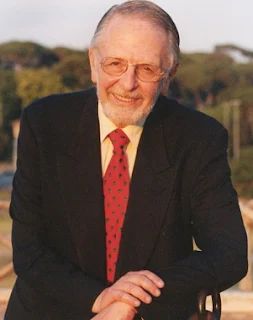 Michael Stern Hart
Michael Stern Hart was an
American author, best known as the inventor of the
electronic book (or ebook) and the founder of
Project Gutenberg, a project to make ebooks freely available via the
Internet died from a heart attack he was 64...
Most of the early postings were typed in by Hart himself.

(March 8, 1947 – September 6, 2011)
Early life
Michael Hart's father was an accountant and his mother, a former
cryptanalyst during
World War II, was a business manager at a retail store. In 1958 his family relocated to
Urbana, Illinois, and his father and mother became college professors in
Shakespearean studies and
mathematics education, respectively. Hart attended the
University of Illinois, graduating in just two years.
[4] He then attended but did not complete graduate school. He was also, briefly, a street musician.
[5]
Project Gutenberg
During Hart's time there, the University of Illinois computer center
gave Hart a user's account on its computer system: Hart's brother's best
friend was the
mainframe operator.
[6] Although the focus of computer use there tended to be
data processing, Hart was aware that it was connected to a network (part of what would become the
Internet)
and chose to use his computer time for information distribution. Hart
related that after his account was created on July 4, 1971, he had been
trying to think of what to do with it and had seized upon a copy of the
United States Declaration of Independence, which he had been given at a grocery store on his way home from watching
fireworks
that evening. He typed the text into the computer but was told that it
would be unacceptable to transmit it to numerous people at once via
e-mail.
[6] Thus, to avoid crashing the system, he made the text available for people to download instead.
This was the beginning of Project Gutenberg. Hart began posting text copies of such classics as the
Bible and the works of
Homer,
Shakespeare, and
Mark Twain. As of 1987 he had typed in a total of 313 books in this fashion. Then, through being involved in the
University of Illinois
PC User Group and with assistance from Mark Zinzow, a programmer at the
school, Hart was able to recruit volunteers and set up an
infrastructure of
mirror sites and mailing lists for the project. With this the project was able to grow much more rapidly.
The mission statements for the project were:
- "Encourage the Creation and Distribution of eBooks"
- "Help Break Down the Bars of Ignorance and Illiteracy"
- "Give As Many eBooks to As Many People As Possible"[6]
His overall outlook in the project was to develop in the least demanding format possible: as worded in
The Chronicle of Higher Education,
to him, open access meant " open access without proprietary displays,
without the need for special software, without the requirement for
anything but the simplest of connections. "
[7]
Other activities
Hart was an author and his works are available free of charge on the
Project Gutenberg server. He was also a member of the
RepRap Project, which aims at creating a self-replicating machine.
[8]
Personal life
He supported himself by doing odd jobs and used an unpaid appointment at
Illinois Benedictine College
to solicit donations for the project. "I know that sounds odd to most
people, but I just never bought into the money system all that much. I
never spent it when I got it. It's all a matter of perspective".
[9]
Hart glided through life with many possessions and friends, but very
few expenses. He used home remedies rather than seeing doctors, fixed
his own house and car. He built many computers, stereos, and other gear,
often from discarded components sacrificing personal luxury to fight
for literacy, and for preservation of public domain rights and
resources, towards the greater good.
[1]
The man who spent a lifetime digitizing literature lived amidst the
hard copies in his house in Urbana stacked, floor to eye-height, with
pillars of books. Mr. Hart led a life of near poverty, and “basically
lived off of cans of beans.” Mr. Hart cobbled together a living with the
money he earned as an adjunct professor and with grants and donations
to Project Gutenberg.
[10]
Death
Hart died on September 6, 2011 of a
heart attack at his home in Urbana, Illinois. He was 64.
To see more of who died in 2011
click here
 Ramaz Chkhikvadze
was a Georgian film and theater actor. First appearing in the 1954 film
"The Dragonfly" (Chrichina), he starred in over 60 films during his
career.[1][2]
Ramaz Chkhikvadze
was a Georgian film and theater actor. First appearing in the 1954 film
"The Dragonfly" (Chrichina), he starred in over 60 films during his
career.[1][2]












